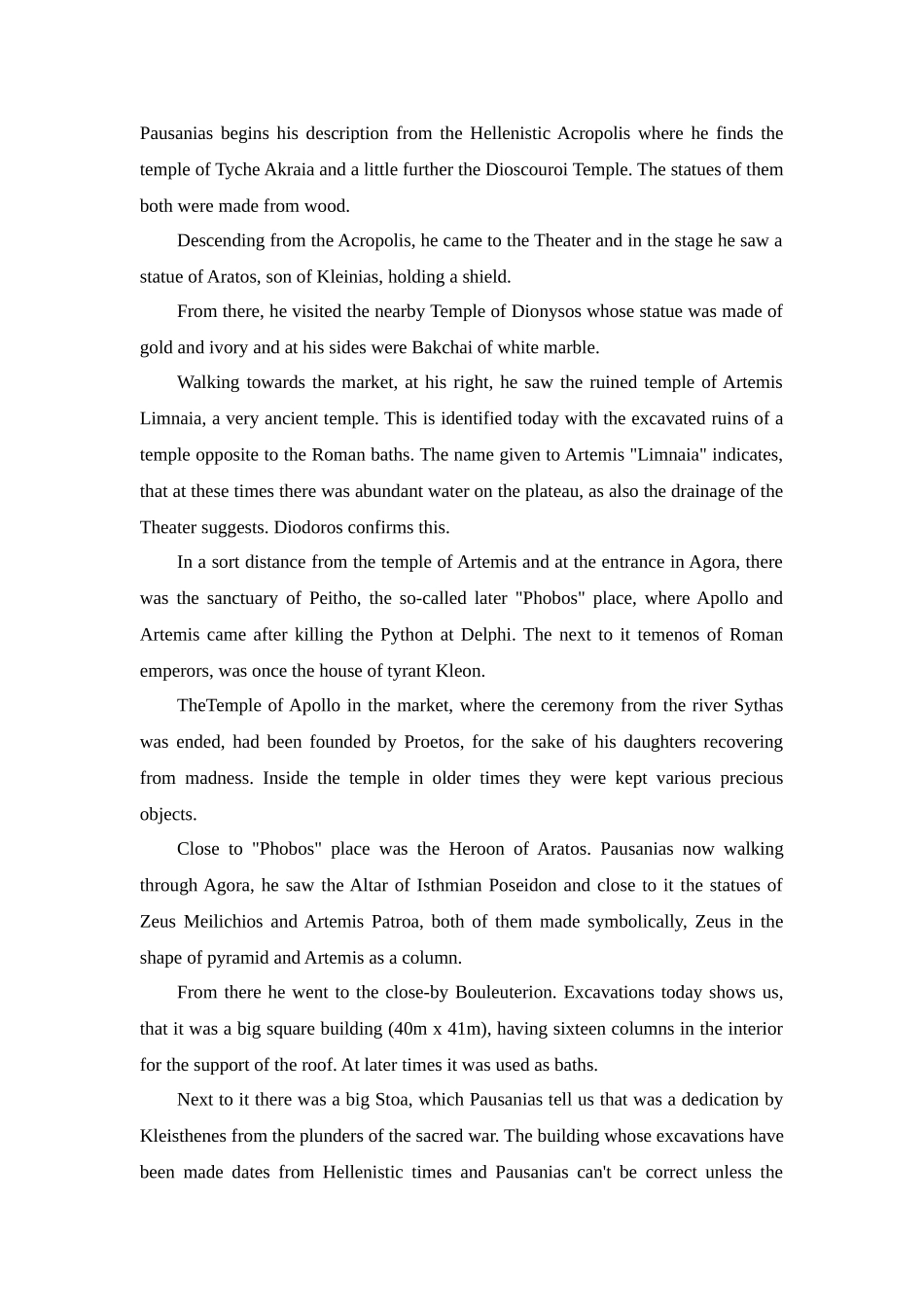PausaniasThe Greek traveler, geographer, Pausanias from Magnesia (115-180 AD), visited Sikyon around 150 AD. In his books gives not only his personal observations on monuments of art and architecture but also topographical and historical information, as well the religious cults and the opinion of the natives of the places he visited. Later in his life, he settled in Rome, where he composed from his notes the "Periegesis" (Tour of Greece) in ten books. In book II describes Corinth and Sikyon. The accuracy of his descriptions have been proved correct. Pausanias came to Sikyon from Corinth. Close to the Gate of the city, he saw a spring whose water was coming from the roof of a cave, the so-called "Stazousa" (dripping spring).Many suggestions have been made about the location of the spring. In our opinion this place is where the spring of Mikri Brysi is today and here are some arguments:In the eastern plateau they were two possible entrances, as still are today, the way Pausanias was coming. The Sacred Gate and the way to the plateau from Mikri Brysi. Since he did not enter from the Sacred Gate, which he mentions only later in his description, the one left ought to be near the spring of Mikri Brysi, where there is a path still today (Saint Athanasios) to ascend to the plateau. This explains why he starts his description from the Hellenistic Acropolis.Any other entrance must be rejected. A possible entrance of Pausanias from the northwest side of the plateau, must be dismissed, the reason being there are no springs and caves there, second he would have seen the Stadium, which he does not mention and third it is an unnatural entrance because Pausanias was coming from the east (Corinth...


